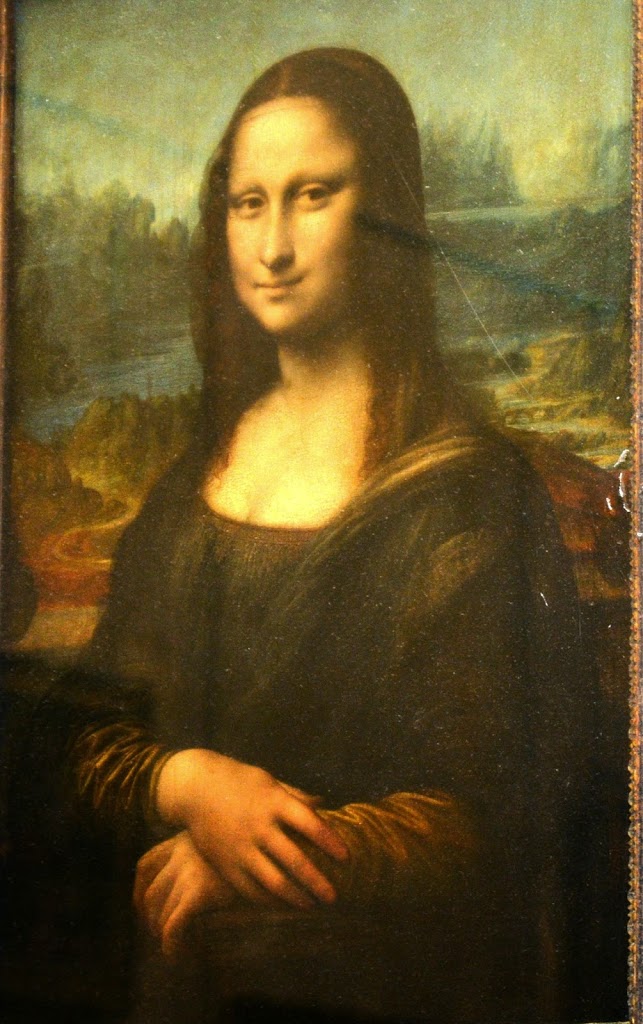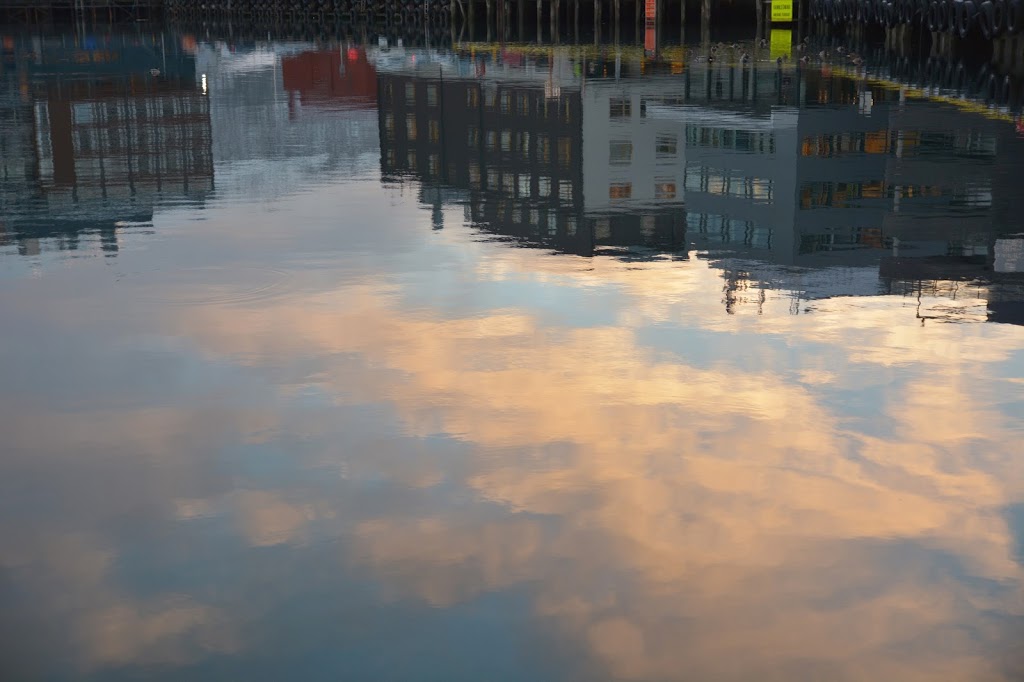Going to the Louvre museum was definitely on my list. I had heard so much from my friends that I had to see explore it. The only hitch was The Louvre (started in August 10, 1793) is one of the world’s largest museums (with 70,000 pieces of art spread across more than 650,000 square feet of gallery space). So two thoughts the word MUSEUM itself is so deterring and secondly it is said that it takes a minimum of 3 days to spend 10 seconds on each art work and if one were keen on studying each it would take 3 years.
For the ones who would say I am not a museum person, please take my word for it you will truly enjoy every bit of the experience. The museum being so big, I was amazed at the easy of buying tickets, the information counters and guides. It was simplified for anyone of follow; well with so many diverse visitors flowing in it couldn’t have been easier than this.
The museum is in a U shape and is divided in three sections of 3 floors which houses Egyptian antiquities, Near Eastern antiquities, Greek, Etruscan, and Roman, Islamic art, Sculpture, Decorative arts and Paintings.
Now given the grandeur of place I knew I couldn’t cover all, so I chose the best of what I knew. This is my modest try to give you a glimpse of the Louvre through my lens.
Mona Lisa
Mona Lisa has always been very mysterious to me. It gathers a lot of interest around the world because its Leonardo Da Vinci’s most popular works, plus thanks to Dan Brown’s novel the Da Vinci Code which talks about hidden codes described in the novel.
 |
| The Mona Lisa |
The name of the painting, Mona Lisa was the result of a spelling error! The original name of the painting was Monna Lisa. Monna in Italian is a short form of Madonna, meaning ‘My Lady’. The identity of the woman in the painting is still a mystery.
-
Leonardo Da Vinci’s sexuality was never known. Some believe that it is the female form of Leonardo Da Vinci himself.
-
In 1956, a man named Ugo Ungaza threw a stone at the painting. This resulted in a small damage on the paint around her left elbow.
-
The painting is considered priceless and so it cannot be insured.
-
A lot is said about the eyebrows of Mona Lisa, one such is that when the authorities were trying to restore the painting, the eyebrows got accidentally removed. However, some people believe that Leonardo Da Vinci never completed the painting and left it without the eyebrows.
-
It is known that there are three different layers painted before the present version of the painting. One version has her hands clutching her arm instead of the chair in front of her.
Consecration of the Emperor Napoleon I and Coronation of the Empress Josephine in the Cathedral of Notre-Dame de Paris on 2 December 1804
 |
| Coronation of Napoleon |
The Coronation of Napoleon is a painting completed in 1807 by Jacques-Louis David, the official painter of Napoleon. The painting has imposing dimensions, as it is almost ten metres wide by approximately six metres tall. The crowning and the coronation took place at Notre-Dame de Paris, a way for Napoleon to make it clear that he was a son of the Revolution.
Psyche Revived by Cupid’s Kiss
 |
| Psyche and Cupid |
This sculpture was commissioned in 1787 by Antonio Canova. The sculpture represents god Cupid at the zenith of love and tenderness, immediately after awakening the dead Psyche with a kiss. The story of Cupid and Psyche is from the Lucius Apuleius’ Latin novel The Golden Ass.
Venus de Milo
 |
| Venus de Milo |
Aphrodite of Milos better known as the Venus de Milo, is an ancient Greek statue and one of the most famous works of ancient Greek sculpture. Created sometime between 130 and 100 BC, it is believed to depict Aphrodite, the Greek goddess of love and beauty (Venus to the Romans).
The Seated Scribe
 |
| The Seated Scribe |
This was in the Egyptian art section. The sculpture was discovered at Saqqara in 1850 and dated to the period of the 4th Dynasty, 2620–2500 BCE. The sculptor is still unknown and the sculpture gets special attention to the eyes.
Death of Sardanapalus
 |
| Death of Sardanapalus |
This one has a very interesting tale to it. The story is very sad and tragic and is depicted to perfection by Eugene Delacroix.
Sardanapalus was the last king of Nineveh, a city in between the Mediterranean Sea and the Caspian Sea (present day Iraq). He decided to take matters into his own hands after learning that his city was under attack by a rebellious enemy group. Instead of facing a humiliating defeat, Sardanapalus decided he himself would destroy his prized possessions.
All is possessions and treasures – including Myrrha, horses, and slaves would all be burned and destroyed.
Liberty Leading the People
 |
| Liberty leading the people |
This painting celebrated the day, during the 1830 Revolution, that the people rose and fought for their liberty. Delacroix used the painting as a political poster for the revolution. Delacroix was a member of the National Gaurd, and he placed himself into the picture as the man on the left wearing a top-hat.
La Grande Odalisque
 |
| La Grande Odalisque |
Grande Odalisque, also known as Une Odalisque or La Grande Odalisque, is an oil painting of 1814 by Jean Auguste Dominique Ingres depicting an odalisque, or concubine. Grande Odalisque attracted wide criticism when it was first shown. It has been especially noted for the elongated proportions and lack of anatomical realism.
Portrait of an Old Man and a Young Boy
 |
| Old man and his grandson |
An Old Man and his Grandson is a ca. 1490 tempera painting by the Italian Renaissance artist Domenico Ghirlandaio. One of Ghirlandaio’s best-known works, it is considered notable for its emotional poignancy.
Sleeping Hermaphroditos
 |
| Sleeping Hermaphroditus |
In Greek mythology, Hermaphroditus or Hermaphroditos was the son of Aphrodite (Goddess of love and beauty) and Hermes (god of transitions and boundaries). The Sleeping Hermaphroditus is an ancient marble sculpture depicting Hermaphroditus life size, reclining on a mattress sculpted by the Italian artist Gian Lorenzo Bernini in 1620. The mattress was looked so real I almost wanted to feel it.
Nike of Samothrace
 |
| Nike of Samothrace |
Nike has been celebrated as the Goddess of triumph and contest throughout ancient Greek mythology. The winged goddess Nike (victory) was the daughter of the Titans, Pallas and Styx; her siblings included Zelos (rivalry), Kratos (strength), and Bia (force). After helping Zeus banish the Titans from Mt. Olympus, the supreme god honored Nike, and she then earned her title as the goddess of victory.
Raft of the Medusa
 |
| Raft of Medusa |
The Raft of the Medusa painted by the French Romantic painter and lithographer Théodore Géricault in 1818-19 when he was just 27 years old. The painting depicts a scene from the aftermath of the wreck of the French naval ship, which ran drifted and met an unavoidable adversity. The French captain in charge was criticised for his incompetence when this raft was hurriedly constructed and at least and on boarded 147 people; all but 15 died in the 13 days before their rescue, and those who survived endured starvation and dehydration and practiced cannibalism.
References : Louvre site and Wiki, Pictures: (Shweta Dave)
















It was difficult to find your blog in google search results.
I found it on 20 position, you have to spread your posts to social websites , it will help you to increase traffic.
You can do it on autopilot, i know how to help you, just type in google –
k2 seo tricks
Thanks Juliet, I just moved from blogger to self hosted site. I am working towards improving it, thank you.
I simply want to say I’m new to blogging and site-building and honestly savored your web-site. More than likely I’m likely to bookmark your website . You absolutely come with awesome article content. Thank you for revealing your website page.
Thank you, that a great compliment. I am happy that my content happened to entice you to come back regularly.
I simply want to say I’m beginner to weblog and seriously loved your blog. Most likely I’m want to bookmark your site . You absolutely come with superb writings. Cheers for sharing your web-site.
Hi there to every body, it’s my first go to see of this web site;
this blog includes awesome and really fine data in support
of readers.
Thank you Pamela.
I’m really impressed with your writing skills as well as with the layout on your blog. Is this a paid theme or did you customize it yourself? Either way keep up the excellent quality writing, it’s rare to see a great blog like this one nowadays..
Thank you.
Wow! At last I got a blog from where I know how to
really obtain valuable data regarding my study and knowledge.
Howdy! I simply wish to give you a big thumbs up for
the excellent information you’ve got here on this post.
I will be returning to your blog for more soon.
This was more informative than I imagined! Thanks for writing.
First off I want to say excellent blog! I
had a quick question in which I’d like to ask
if you do not mind. I was curious to find out how you
center yourself and clear your mind prior to writing.
I have had a difficult time clearing my mind in getting my thoughts out there.
I truly do enjoy writing but it just seems like the first 10 to
15 minutes tend to be lost simply just trying to figure out how to begin. Any suggestions
or hints? Thank you!
This is an amazing post Shweta!!! I was about to write my next post on Louvre Museum.. but they way you have detailed out the descriptions is awesome..
Hi to all, it’s in fact a pleasant for me to visit
this website, it contains valuable Information.
“I really enjoy the blog. Cool.”
I couldn’t resist commenting. Exceptionally well written!|
Thanks on your marvelous posting! I genuinely enjoyed reading it, you could be a
great author.I will remember to bookmark your blog and definitely will come back in the foreseeable future.
I want to encourage one to continue your great job, have
a nice weekend!